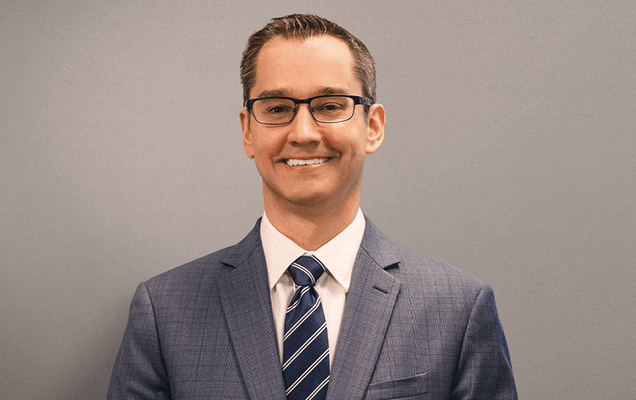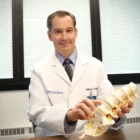Cauda equina syndrome is a relatively rare neurological condition caused by pressure on the cauda equina, a bundle of nerves at the base of the spine. This nerve bundle controls the function of the bladder, bowels and legs. Symptoms can develop gradually or very suddenly, but in any case, prompt spinal decompression surgery is essential to relieve pressure and prevent long-lasting nerve damage. Cauda equina syndrome recovery after spinal decompression surgery is a gradual process that can take weeks or months for nerves to heal.
What Is Cauda Equina Syndrome?
The cauda equina (Latin for “horsetail”) is a collection of nerves and nerve roots in the lumbar area of the lower back that does indeed resemble the tail of a horse. The nerves of the cauda equina govern sensation and movement in the lower limbs, bladder and bowels. When the cauda equina becomes compressed, the pressure on these nerves affects the function of the lower body, causing symptoms such as the following.
- Numbness and weakness in the legs and feet
- Severe pain in the lower back
- Dysfunction of the bladder and bowels
- Unexplained sexual dysfunction
What Causes Cauda Equina Syndrome?
A number of conditions and events can cause pressure on the nerves of the cauda equina, but the most typical cause is a severely herniated disc in the spine’s lumbar region. Other kinds of spinal problems can also cause cauda equina syndrome, including spinal stenosis, a gradual narrowing of the spinal column, or fractures in the vertebrae caused by the bone disease osteoporosis. Less common causes include tumors at the base of the spine, infections or inflammation, or trauma to the lower back.
Cauda equina syndrome can affect people of any age, although adults are more likely to experience it due to age-related degeneration of the spinal discs or other spinal problems. Diagnosis depends on a thorough neurological examination along with MRI and CT imaging, or a myelogram, a procedure in which dye is injected into the spinal column and then tracked in order to pinpoint the source of pressure on the cauda equina.
It's time to get back
to doing what you love.
Treatment Options for Cauda Equina Syndrome
Treatment for cauda equina syndrome begins with relieving the source of pressure on the nerves of the cauda equina – and that should be done quickly for the best chance of recovery. When neurosurgeons perform a spinal decompression procedure within 24 to 48 hours after the onset of symptoms, patients are more likely to regain the most functioning in the lower body, but even those treated later than that can regain considerable functioning.
Spinal decompression surgery can take several forms, depending on the cause of the pressure. Lumbar laminectomy can be used to move a herniated disc back into place. A similar procedure, called a discectomy, can be performed to remove pieces of bone or disc material that presses on the cauda equina. This kind of surgery can also be used to remove other sources of pressure such as a tumor.
During spinal decompression surgeries, an incision is made in the lower back at the source of the pressure. Your neurosurgeon will then move aside the muscles, tissues and protective lamina surrounding the nerves in order to access the source of pressure and relieve it. That could involve repairing a herniated disc, removing a tumor, or repairing a lesion. After the procedure is complete, the incision is closed and recovery begins with a typical hospital stay of one to four or five days.
Depending on the cause of cauda equina syndrome, other treatments might be needed, too. Medications might be used to reduce inflammation or attack an infection, and if a tumor caused the pressure, your neurosurgeon may also prescribe a course of radiation and chemotherapy.
Cauda Equina Syndrome Recovery at Home
Recovering from a spinal decompression procedure such as lumbar laminectomy or discectomy can take about four to six weeks. This timeline depends on individual health factors such as age, general health and the cause of the compression. During that time, activities are gradually increased over time while the incision heals and stitches are removed. People who have sedentary jobs that don’t require much lifting or bending can generally get back to work in about four weeks, but people with physically demanding jobs might need to recover for up to four months before returning to work.
Healing from the surgery itself is just one part of recovering from cauda equina syndrome, though. The affected nerves must also recover, and that can continue long after incisions are healed.
To help with recovery, patients with persistent weakness or instability in the legs, or trouble with bowel and bladder functions, might need physical or occupational therapy, assistive devices like walkers or canes, and bladder retraining during the weeks and months it can take for nerves to recover from damage.
Patients with persistent nerve damage causing severe bladder and bowel problems may need to learn strategies such as self-catheterization and techniques for managing bowel problems while nerves heal – a process that can take 18 months to two years, or longer. In some cases, nerve damage can be permanent, and patients need assistance or adaptive devices for daily living.
With prompt follow-up and treatment from experienced New Jersey neurosurgeons, most people with cauda equina syndrome are able to recover significant function in the legs and lower body. Your neurosurgeons in the tri-state area can work with you and your family to create the cauda equina syndrome recovery treatment plan that’s right for your unique circumstances.

About Dr. William S. Cobb
Dr. William Cobb is an accomplished neurosurgeon in North Jersey and a proud member of Neurosurgeons of New Jersey, practicing out of their Ridgewood office conveniently located on East Ridgewood Avenue. During his Neurological Surgery residency, he became passionate about the development and treatment of brain tumors affecting the brain and spine. Dr. Cobb uses state-of-the-art technology for surgical intervention in the treatment of tumors of the brain and spine including Gamma Knife radiosurgery. He has vast experience in using modern minimally invasive surgery for the treatment of degenerative spine and intervertebral disc disease. Dr. Cobb serves as the Director of Neurosurgical Oncology at Valley Hospital. He's accepting new patients.






